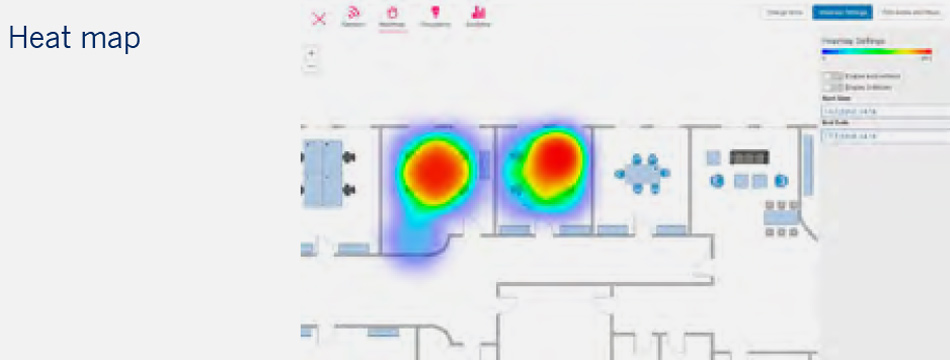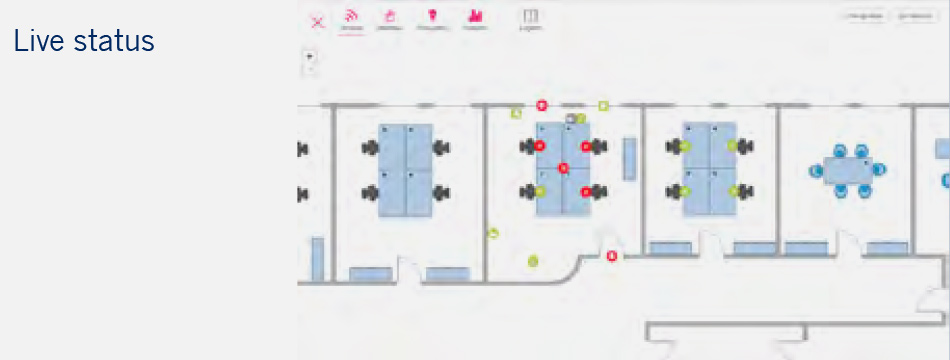Smart Spaces are physically existing or digital environments in which people and technology-based systems interact in open, networked and intelligent ecosystems. These are based on sensor-generated building status data. Smart Spaces adapt to the needs of their users and can decrease running costs, increase health & wellness, optimize productivity as well as saving energy & CO2.
Smart Spaces are equipped with networked sensors that collect environmental and status data at multiple spots in the building. The data can be processed locally on site or, if desired, in a cloud-based IT platform – also as a “digital twin” if required. Thus, digital services and analysis tools complement the physical space. A dashboard presents the data in a structured and user-friendly way so that managers and decision makers can review it and utilize it for intelligent building management. Sensors provide data showing occupancy of areas, rooms or even individual desks or chairs enabling 25-40 % savings in office space required. Sensors monitor and control key parameters (e.g. air quality, lighting, temperature, humidity & occupancy levels), leading to up to 15 % increased productivity and 15 % less absenteeism. Sensors provide the real-time data required to monitor occupancy levels in offices, conference rooms, retail spaces etc. for space/energy optimization or on-demand services. They can also monitor people counting to ensure no over-occupancy and lack of social distancing. Sensors provide data to enable on-demand cleaning, Sensors monitor occupancy and key parameters such Monitoring and controlling spaces can bring significant benefits. Smart Spaces provide more safety, comfort and efficiency while saving costs.Smart Spaces workflow




Applications of Smart Spaces
Office Space Optimization
Employee Productivity (Health & Wellness)
People Counting
Digital Restroom Management
disinfecting and stocking of restrooms. They show real-time availability of facilities and any alarm situations.Energy Monitoring and Savings
as temperature, window status and lighting and control these according to actual demand, helping to save up to 30 % energy.Benefits of Smart Spaces
Benefits of wireless technology in Smart Spaces
Wireless-based solutions offer clear advantages in Smart Spaces:







